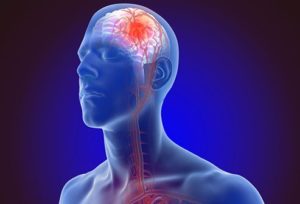A 17 bed neurorehabilitation facility for adults who have had an acquired brain injury, traumatic brain injury or any neurological conditions.
Read moreStroke
A stroke is a brain attack. It happens when the blood supply to part of the brain is cut off, killing brain cells. Damage to the brain can affect how the body works. It can also change how you think and feel.
The effects of a stroke depend on where it takes place in the brain, and how big the damaged area is.
There are three different types of stroke; ischaemic strokes, haemorrhagic strokes and transient ischemic attacks.
- An ischaemic stroke is caused by a blockage cutting off the blood supply to the brain. This is the most common type of stroke.
- A haemorrhagic stroke is caused by a bleeding in or around the brain.
- A transient ischaemic attack or TIA is also known as a mini-stroke. It is the same as a stroke, except that the symptoms only last for a short amount of time. This is because the blockage that stops the blood getting to your brain is temporary.
What causes stroke?
As we age, our arteries become harder and narrower and more likely to become blocked. However, certain medical conditions and lifestyle factors can speed up this process and increase your risk of having a stroke.

Egerton Road – Priory Adult Care Services
8th August 2019A small residential home in Bexhill for younger adults with an ABI.
Read moreQEF Neuro Rehabilitation Services
8th August 2019Support for adults with physical, cognitive and/or communication disabilities as a result of an acquired brain injury, stroke or neurological illness.
Read moreContinuing Healthcare for adults – East Sussex CCG
8th August 2019Post acute phase specialist neurological rehabilitation therapy funded by the NHS.
Read moreCommunity Neurological Rehabilitation Team (North)
8th August 2019Helping patients and their families manage at home and in the community through rehabilitation and resettlement support.
Read moreCommunity Neurological Rehabilitation Team (Bognor Regis)
8th August 2019Rehabilitation support for people who have been clinically diagnosed with a stroke, subarachnoid haemorrhage or acquired brain injury within the last 12 months, or with a diagnosis of a progressive neurological condition and who have the potential for improvement through rehabilitation.
Read moreCommunity Neurological Rehabilitation Team (Worthing)
8th August 2019Rehabilitation support for people who have been clinically diagnosed with a stroke, subarachnoid haemorrhage or acquired brain injury within the last 12 months, or with a diagnosis of a progressive neurological condition and who have the potential for improvement through rehabilitation.
Read moreCommunity Neurological Rehabilitation Team (Brighton & Hove)
11th July 2019We are a multidisciplinary neuro rehabilitation team for people aged 16 and over who have specific long term neurological conditions.
Read more- Page 2 of 2
- 1
- 2

